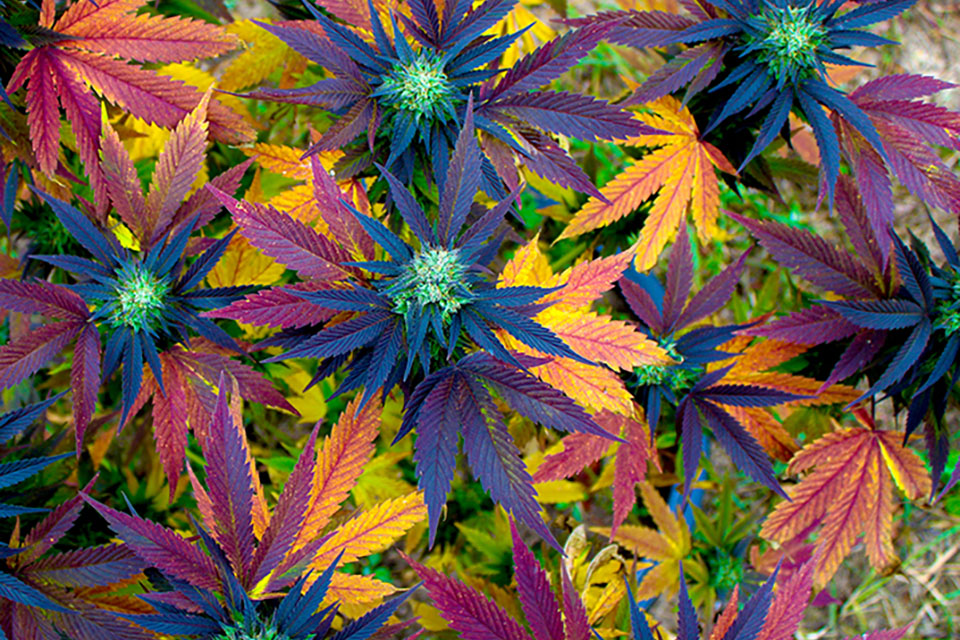
Cannabis enthusiasts know that marijuana produces some seriously potent odors. That unique, easily recognized smell is loved by many, but when it comes from a grow room rather than a smoking session, it can lead to issues because of the mixed opinions and laws about growing marijuana seeds. Whether you grow outdoors in California or Montana, or have an indoor grow room in Kentucky or West Virginia, these tips will be helpful for you to keep your growing project as discreet as possible.
Do not wait until the grow room is set up and the plants are already producing to investigate options for combating odor. This article provides information on ventilation, carbon filters, air purifiers, odor neutralizers, and indoor climate controls utilized in the development of low-odor indoor grow operations.
Why It is Important
Before looking at specific methods for dealing with cannabis-related odors, it is worth discussing why growers would be worried about the smell to begin with.
Consider these factors:
Security
he last thing underground growers in Kansas want to do is alert everyone in the neighborhood to the fact that they are cultivating pot seeds nearby. No matter how large or small their operation is, publicity threatens the security of a marijuana crop. If everyone within several blocks knows exactly where the smell of marijuana is coming from, it attracts attention from neighbors, police, and sometimes thieves. As anyone with experience growing regular or feminized cannabis indoors knows, it takes a lot of investment capital to set up even a small grow. Indoor cultivators prioritize air circulation as much as light-hours or water-levels, rather than risk having odor leaks jeopardize the security of their project.
Respect for Neighbors
Marijuana enthusiasts usually love the smell of the plant, but their neighbors might not feel the same way. To avoid conflicts with neighbors, growers can use equipment and supplies to prevent odors from escaping the grow room. Keeping the smell of marijuana down in most neighborhoods is a respectful and normalized custom, regardless of the local marijuana laws.
The Health of the Plants
It is often the case that excessive odor is at least partly because of unhealthy environmental conditions, such as excess heat and humidity, poor ventilation, or lack of air circulation. All these issues can negatively impact plant growth, so look at dealing with excessive odors caused by environmental conditions as an opportunity to reduce local attention while also ensuring the optimum conditions are provided to the developing plants.


A Review of the Options
Growers should always start by ensuring that they have control over the grow room’s temperature, humidity, and airflow. Do not just take the advice of a friend who swears by one method over another, because the truth is that none of them are perfect. Instead, learn about all the available options and the best practices for implementing them and do not be afraid to try a combination of scent removal techniques.
Install Filters on Exhaust Fans
Every indoor cannabis grow needs adequate air circulation. Not only does stagnant air have a strong smell, but it can also stunt the plants’ growth. Depending on the size of their operations, most growers can simply install intake and exhaust fans to pull in the fresh air and remove the stagnant air from their grow rooms, but without any modifications exhaust fans cause a whole new problem: when they pull the stagnant air out of the grow room, odors are pulled along with it.
Growers often install filters to reduce odors from escaping the fan. It is important to size filters correctly to prevent spaces and air leaks. Air leaks around the filter or the fan itself allow odors to escape through the cracks.
When sizing filters, choose one that can process a larger volume of air than the fan can process. A general standard is to size a filter that has 20% more capacity than the vent fan.
Choose the Right Filters
The most common filters used in grow rooms are carbon filters. They work by trapping odor-producing molecules in carbon while odor-free air is vented outside. Carbon filters are usually packaged to include pre-filters and additional layers of carbon.
Seal Leaks
The areas around exhaust fans are especially prone to air leaks, but leaks are also common around intake fans, doors, and windows. It is easy for growers to miss one small leak because they are accustomed to the smell, but a lot of air can escape through even a small crack, especially if it is in the hose leading out of a vent fan. Neighbors who are not used to the smell of marijuana will be much more likely to notice the smell before the growers themselves.
Ensuring that the grow room is air-tight does not just help eliminate odors. It also makes it easier to provide steady control of the contained microclimate. A grow room needs to operate with specific temperature and humidity levels throughout the plants’ growth cycles, so sealing air leaks is a big part of maintaining those levels.
Ensure Optimal Indoor Climate Conditions
Stagnant air is not the only contributor to increased odor— high temperatures and high humidity levels do too. While maintaining optimal levels of temperature, humidity, and carbon dioxide will not eliminate odor entirely, taking care of indoor environmental variables will help to control its intensity.
Consider Air Purifiers for Large Grows
Air purifiers go a step beyond carbon filtration. While carbon filtration only removes unwanted odors and volatile organic compounds (VOCs), air purifiers also remove other airborne contaminants like mold spores, pollen, and dust. Unlike carbon filters, air purifiers are solitary, stand-alone systems.
Most small-scale growers forgo air purification, as these systems tend to be expensive and are not as effective as carbon filters at removing the scent of cannabis. For commercial growers or those with exceptionally large grow rooms, they may be worth the investment, but for small grow rooms, grow tents, and other space-restricted areas, they are generally not worth it.
Know When to Use Odor Neutralizers
Despite their somewhat misleading name, odor neutralizers do not actually remove the scent of marijuana plants from the air as much as they cover it up. Although they’re not a great long-term solution, some small-scale growers can get away with using odor neutralizing products to cover the scent of their crops without investing in carbon filtration systems.
The primary advantage of odor neutralizing gels and air fresheners is their low cost. However, it is important to note that those tiny plug-in air fresheners homeowners often buy at the hardware store will not cover the smell of even one marijuana plant. Instead, growers need to purchase specialized products like ONA gel.
While odor neutralizers may provide a temporary solution for masking the scent of growing plants, they should never be positioned directly inside the grow room or grow tent. The synthetic scents emitted by odor neutralizers can wind up infusing both flowering and cured buds with the smell of chemicals. American seed growers do not generally put odor neutralizers or air fresheners in their curing room because the smell can affect the aromatic quality of the finished product.
Avoid Ozone Generators Entirely
Ozone generators are a relatively recent technological advancement when it comes to neutralizing odors. Some growers swear by them, but most feel that they are not as efficient as carbon filters. Plus, ozone generators can have a dramatically negative impact on indoor air quality.
Some countries and states have gone so far as to make ozone generators illegal for home and commercial use, which may be a cause for concern. They do not just jeopardize the health of growers’ plants, but also that of the growers and visitors.
Final Thoughts
Maintaining air flow is a key factor in minimizing odor in a grow space. Growers tend to use carbon filters, exhaust fans, and/or air purifiers to keep the air moving while reducing the smell of the air being released into the air outside. While some strains of marijuana are not as skunky as others, before cultivating weed seeds indoors, growers are advised to reduce odors to prevent unwanted attention.






